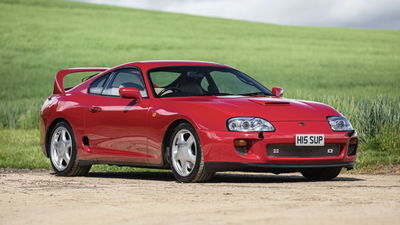Norton Once Made A Wankel Sports Bike And Here's One You Can Buy

In the world of cars, only one manufacturer - Mazda - truly persevered with the ‘Wankel’ rotary engine. Although they never really took off for motorcycle use either, far more manufacturers of two-wheeled products had a go. It’s easy to see why - one of these reciprocating engines makes way more sense in the frame of a bike than under the bonnet of a car.
With a much lighter object to propel, the lack of torque isn’t an issue, and neither is how high you have to rev them to get anywhere - in a bike, that’s par for the course. Crucially, rotary engines make a lot of power for their size and weight.

By the late 1980s, then-struggling Norton had already been dabbling in rotary-engined bikes for years. An employee called Brian Crighton thought such a thing would be ideal for a new motorsport assault. He developed a 588cc, liquid-cooled twin-rotor engine from one of the company’s Interpol 2 police into something far more potent - famously doing so in a caretaker’s shed.
The initially reluctant higher-ups were impressed with Crighton’s results. A little further down the line, John Player Special-liveried RCW588 race bikes were doing all sorts of winning, picking up trophies at the Isle of Man TT, British F1 and more.
The Norton F1 came along in 1988 as the first road-going counterpart for the RCW588. Just like the racer, it had a 588cc twin-rotor engine sitting in an aluminium frame made by Spondon and was largely hand-built. The F1 was good for 95bhp at silky-smooth 9,500rpm, topping out 1,000rpm later.
Norton charged the equivalent of £35,000 in today’s money for the F1 and only made 140. Later this bike morphed into the sharper F1 Sport, made in even smaller numbers. No one seems to know the exact figure, but it’s widely accepted to be around 70.
Production of the F1 Sport ended in 1994. Saddled with debt and motorsport glory behind them, Norton didn’t last much longer. The company was revived in 2008 before going into administration last year amidst scandalous circumstances.

As for the rotary engine, no major player bothered with it in following the F1 Sport’s demise, despite once looking like the next big thing for bikes. The reason? Just as was the case for cars, they’re not clean nor efficient enough, and yes, there is the longevity of apex seals to think about.
See also: 6 Fascinating Rotary Cars - That Aren’t Mazda RXs
Brian Crighton’s new concern Crighton Motorcycles will happily sell you its CR700W - effectively a spiritual successor to the F1 - for a whopping £85,000. Alternatively, you could pick up a used F1. Given the low production numbers, they don’t come up for sale that often, but Car & Classic is about to auction two online - an F1 and an F1 Sport, both from the same owner.

The bike you see in these images is the Sport. It was first registered in December 1991 to a man on the Isle of White, one of only three customers to spec the two-seater version. He clocked 35,000 miles on the bike before a stroke stopped him riding, laying the bike up for eight years and subsequently selling it to the current keeper. It was fully restored by a Norton engineer, and it is up for sale due to the owner wanting to downsize his collection.
Neither will be cheap, though, judging by an F1 which sold via Bonhams last year for £40,250.















Comments
No comments found.